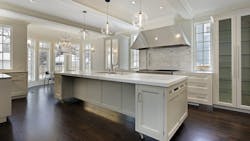Using Adaptive Design to Attract More than Just Senior Residents
Adaptive design focuses on helping adults—especially those 65 and older—live independently as their needs change, but these design principles don't need to be limited to senior housing communities alone. With many older adults preferring to live in mixed-age neighborhoods closer to family, building homes to adapt to a range of abilities has become more important. According to Multi-Housing News, creating environments that promote wellness and accessibility from the start can attract residents of all ages and help grow referrals.
Adding these features could mean makings sure there are accessible accommodations—such as wide hallways and roll-in showers—to individual units, but it can also mean adding walking paths and other communal areas to promote healthy lifestyles.
Essentially, experts say, the more you do to create an environment that supports a healthy, turnkey wellness lifestyle the more you’ll attract and retain residents of all ages and inspire them to refer your community to their loved ones. This means looking at your common areas, landscaping and individual units from the start of a project. Some developers are doing this already.
“While there’s definitely a growing awareness of the need for more accessible and inclusive design, the level of commitment varies,” observed interior designer Kellyn Brewer Messel with LS3. “The reality is that many developers are still balancing accessibility goals with ROI considerations. ADA-compliant unit layouts require a larger footprint and additional features, which can be seen as a challenge to maximizing the property’s profitability.”
But, she added, challenging developers to embrace adaptive design principles will expand their market appeal and demographic reach.
